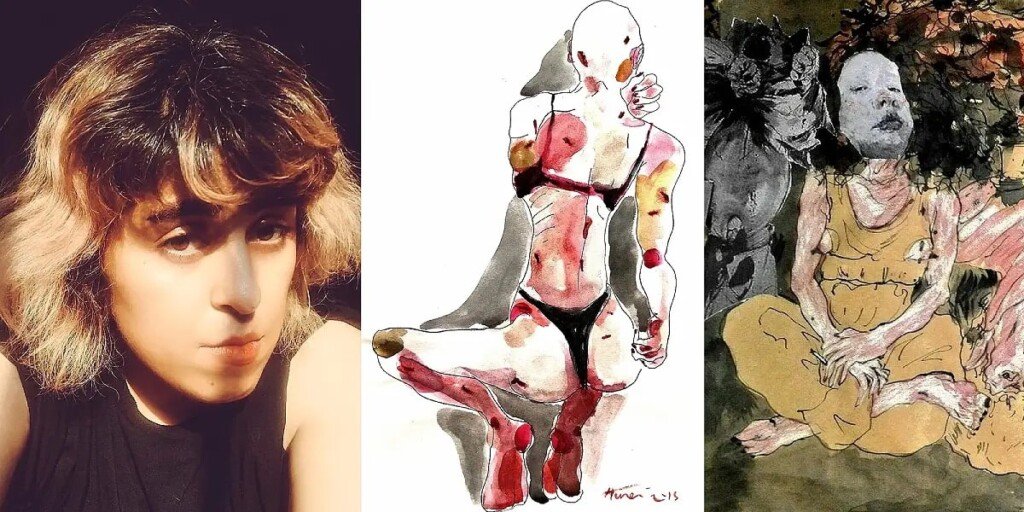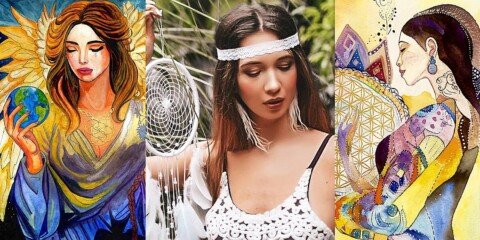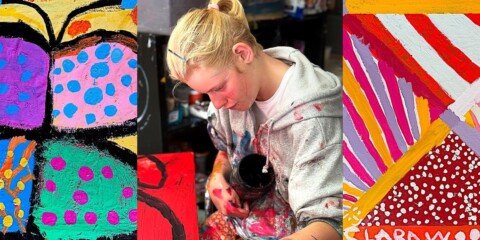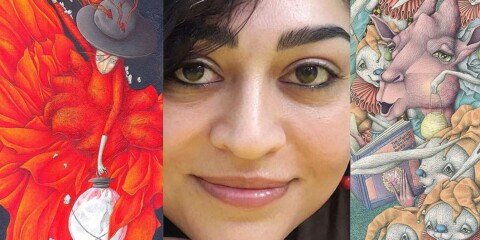In the realm of art where emotion and thought intertwine, Athena Motamedi (@athenamotamedi) emerges as a visionary storyteller. As a visual and conceptual artist, as well as an NFT creator and collector, Athena has transformed her inner world into a dynamic dialogue of color, form, and spontaneity. From her early days as a prodigy — where her talent was recognized even among more experienced peers — to her evocative, boundary-defying creations, her journey is a testament to art’s power to capture the ineffable.
In this interview, Athena opens up about how personal and societal struggles, fleeting moments of beauty, and even the subtle gestures of everyday life serve as catalysts for her creativity. Prepare to be inspired as she shares the intimate language of her soul. My heartfelt thanks to her for reminding us that art is not just an object, but a transformative, interactive, unique experience that resonates deeply within all of us.
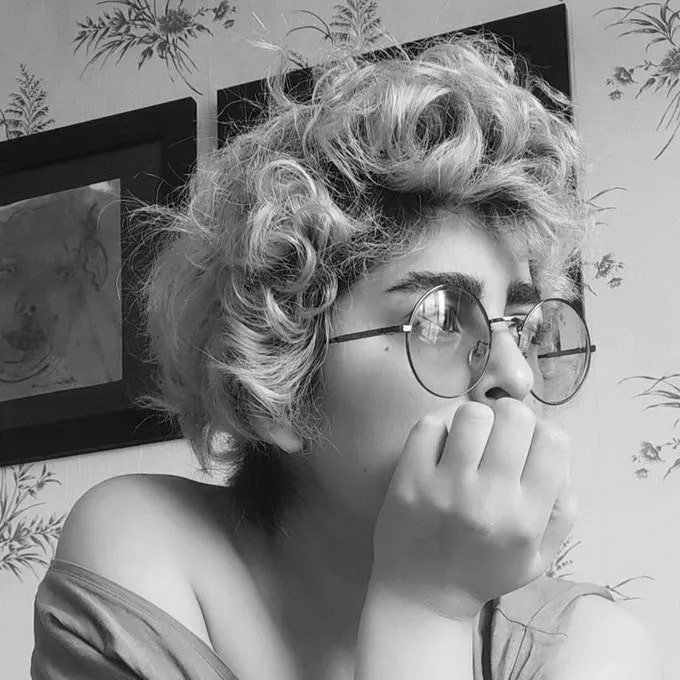
🟥 Can you share a bit about your background and the journey that led you to becoming an artist?
I can confidently say that the first thing that drew me towards art was the language of my emotions and thoughts, which nothing but art could express. It was as if art had found me, allowing me to express my entirety without any boundaries or limitations.
🟥 Was there a defining moment or experience that solidified your decision to pursue art seriously?
Yes, when I was young and the youngest student in a painting studio, my work was so good that it always amazed my teacher. He would ask me to help the other students, all of whom were older than me, and guide them in his absence. It was then that I realized I undoubtedly had a unique talent, one that I needed to nurture and never let go of.
🟥 Do you remember the first piece of art you created, and what inspired you to make it?
Moving past the paintings of my childhood, the first work I created seriously and purposefully was during my teenage years-a high-contrast portrait of a famous Iranian poet named Shahriar. At that time, his poetry and personal life were a great source of inspiration for me.
🟥 What inspires you the most when creating your art?
The inner struggles of individuals and their psychological fragmentation under various emotional circumstances, as they confront their personal lives and the surrounding social environment in which they live.
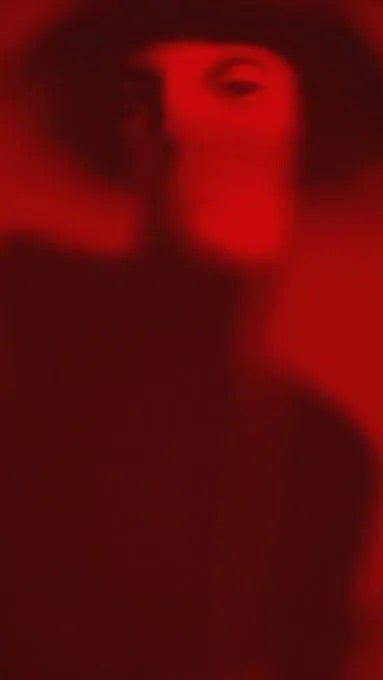
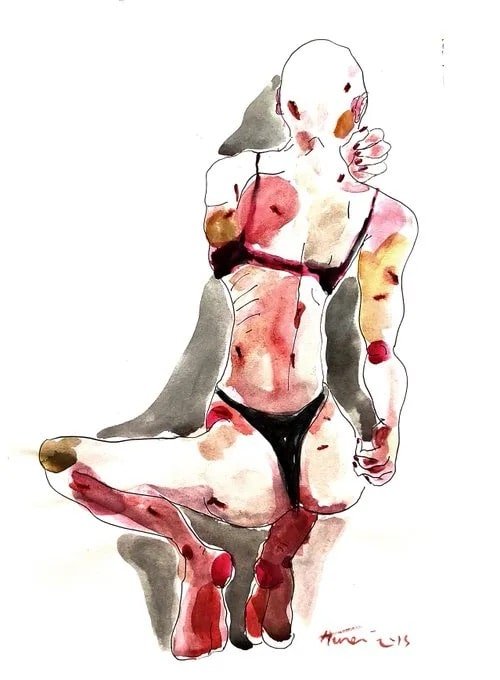
🟥 Are there specific activities, rituals, or moments that fuel your creativity?
In the country where I was born and raised, whether willingly or unwillingly, from childhood, you are deeply connected to an environment intertwined with strange political, social, and even historical events shaped by your predecessors. Every day, with every piece of news you hear, no matter how sorrowful it may be, it stirs you to create something new. You know there is only one way to release yourself and document everything you want to say-through your art and creativity.
And in my personal life, during all the times I face ups and downs or find myself in emotionally overwhelming situations, or even when something strange and delightful happens that deeply affects me-even something as small as a peculiar gesture from my cats-these become triggers for creation.
🟥 How would you personally define art, and what deeper meaning does it hold for you?
Art is an unknown sensory feeling in which the heart and mind play roles in its formation.
Human beings in this world, apart from the physical elements that bring artistic works to the realm of perception, are dependent on the soul. The soul is the same feeling that is reflected from the human mind for creating artistic works. and all the necessary tools and instruments used to create artistic works influence the soul and mind of humans. An artist reveals the mysteries of existence with their artistic work and, in this way, connects themselves with the universe, a connection that is as vast as the universe itself.
🟥 What part of the creative journey excites you the most — conceiving an idea, the act of creating, or finishing the piece?
I cannot choose just one aspect because the entire process of creation — from the initial idea in my mind to the final piece — is incredibly fascinating and important to me. It’s perhaps like a journey where you cannot just think about the destination and ignore the path. You will even enjoy preparing for the journey and the act of starting it.
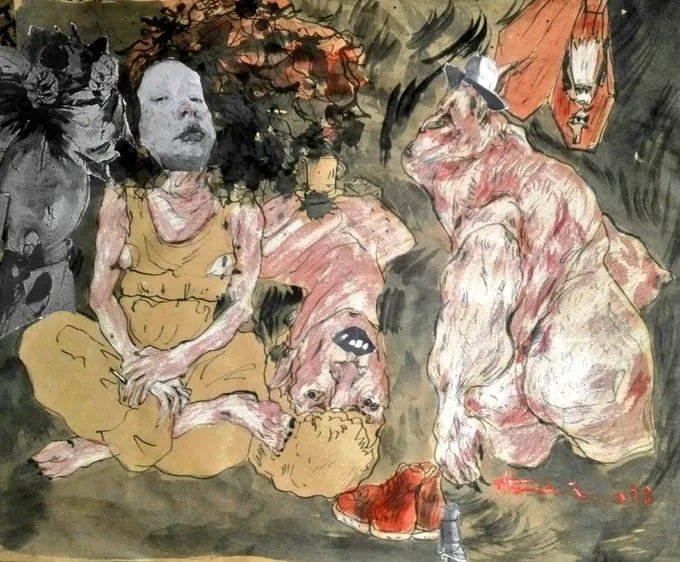
🟥 Do you follow a structured plan when creating art, or is your process more spontaneous?
Throughout the entire process of creating a piece, I do not follow any pre-planned structure. Everything happens spontaneously in the moment.
🟥 What time of day do you feel the most creative, and why do you prefer that time for your work?
Usually, if I were to consciously choose a time to create an artwork, I would choose the night because I typically feel better and have more focus in the darkness and silence of the night. However, whenever an idea or feeling inspires me to create, whether it’s day or night, I start working right at that moment.
🟥 Do you listen to music while creating, and how does it influence your process?
Depending on my emotional state at the moment, I choose a suitable piece of music because music can help enhance my ability to recognize and manage my emotions. Additionally, stimulating creativity through music is a dynamic and significant process that has a remarkable impact on the human mind and soul.
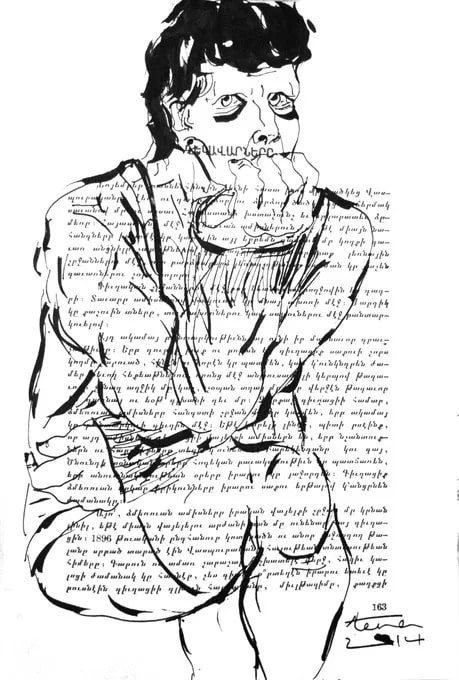
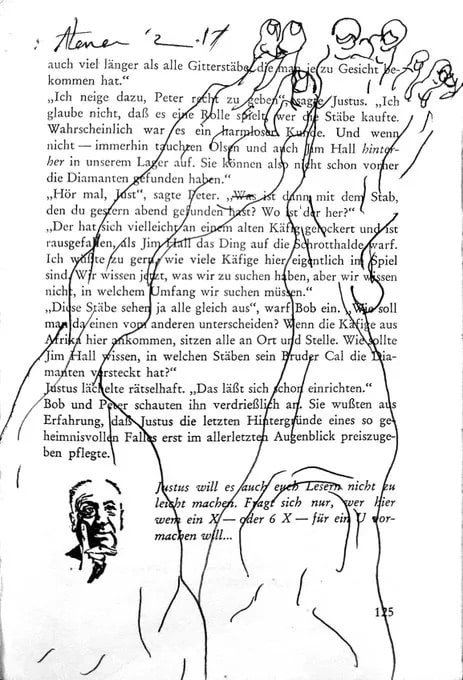
🟥 Do you have any specific rituals or routines you follow before starting a new project?
No, most of the time I don’t even make a simple sketch and I directly start the main execution because I believe that the moment everything is overflowing from within you, you must capture it! And surely the best things happen in that very moment. So, there’s no time left for any special ceremonies.
🟥 What is the most challenging aspect of creating art, and how do you navigate those?
Art does not reproduce what is visible; rather, it makes things visible.
One of the reasons why defining the nature of art and those who create it is so difficult is that art is often emotionally driven.
The more aware an artist is of their emotional state, the better they can create what they desire and pursue the reason behind it.
🟥 What keeps you motivated during times when creativity feels like a struggle?
Reviewing the works, the process of their creation, documentaries, and biographies about my favorite artists, as well as the words they have left behind about art and artists.
Like this famous quote from Edgar Degas:
“Art is not what you see, but what you make others see.”
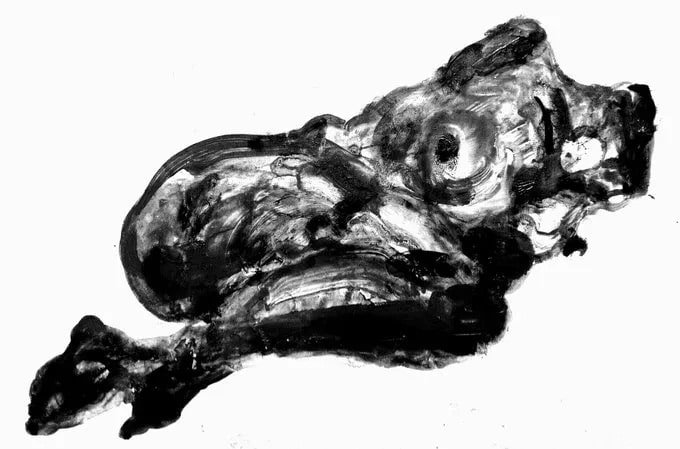
🟥 Can you share an experience or lesson that contributed the most to your growth as an artist?
Consistency in creating art is the most important thing. Never let anything take art away from you, even for a short period of time!
And a piece of advice that I never forget: When starting a work, never think about the outcome. Be assured that what ultimately happens will be the best possible result.
🟥 Is there a piece of advice you received that completely changed the way you create or think about art?
I have learned to always remember that in the process of creating a work, I must first consider my own satisfaction and fulfillment as the creator. Because a work that satisfies me as an artist will undoubtedly convey the entirety of my emotions to my audience.
🟥 When you view a piece of art, what qualities or emotions do you look for?
First, I must say that, in my opinion, art should be viewed as an interactive adventure. The meaning of art arises from the interaction between the viewer and the artist. What the viewer interprets from a work, regardless of the artist’s intention as the creator, holds significance. From this perspective, to understand a work of art, we should allow ourselves to feel less fear, because there is no right or wrong way to interpret a work of art.
Molly O’Connell, an artist and poet from Minnesota, says about this:
“I don’t need the viewer to understand exactly what I mean, but I do want them to, so to speak, shake hands with my work. It’s more about opening up to a dialogue or inviting an experience.”
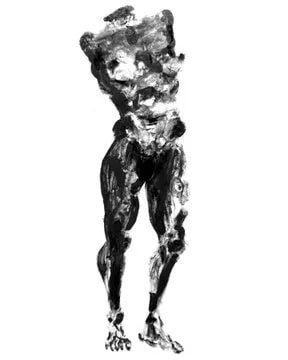
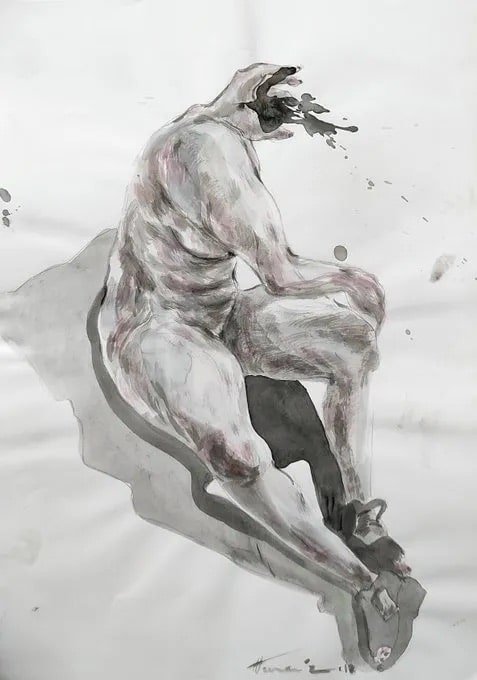
🟥 How do you perceive art’s purpose and its impact on individuals and society?
Art, as a cultural element, plays a significant role in shaping the identity and sense of belonging of individuals within a society. Traditions, customs, beliefs, and values of a society are transmitted to future generations through art, thereby strengthening social cohesion and solidarity. Art also helps individuals find their place in the world and connect with others.
Art is born from society and emerges within it, as art does not form or appear in a vacuum. When an artist narrates the external world, they do not depict an inner world disconnected from reality. Instead, the portrayal of their inner life and emotional states reflects their environment and mirrors social life. Thus, the emotions evoked by artistic works in observers have a social dimension.
In essence, art functions as a language — a unique language of emotions and passions, reflecting the deepest feelings. In its purity, art surpasses language, and in its universality, it holds precedence over all languages. The great thinker Auguste Comte believed that “art is a part of the language that all human beings understand and comprehend.” In his view, art is the true and universal language of the world.
🟥 In your view, what do concepts like “passion” and “uniqueness” represent in art?
The ultimate purpose of art is to awaken every dormant feeling, desire, and passion, to breathe life into them, to fill the human soul with richness, and to make everything perceptible to human emotions. Art has the power to experience and nurture what lies in the innermost and most hidden corners of the human soul. It can stir and evoke the depths, multiple potentials, and diverse aspects of human nature. Art is the supreme means of conveying the genuine inclinations of the soul to human consciousness, and this is truly unparalleled.
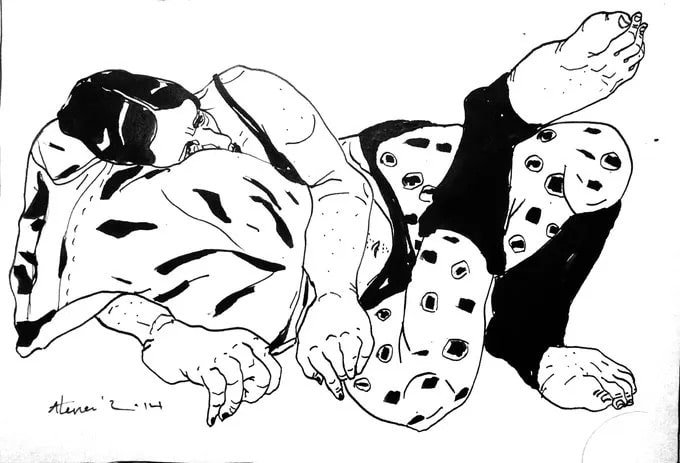
🟥 What are the non-negotiable essentials in your workspace?
Under no circumstances and for no reason can I ever compromise my integrity in any commissioned work, which includes my emotions, artistic style, and any personal vision or idea I hold for creating that piece, merely to satisfy a client or for material gain. All individuals who purchase my works or commission a piece from me are aware that they cannot interfere in any stage of the creation process or impose their own opinions.
🟥 Do you have a favorite tool or object in your studio that holds sentimental value?
A complete set of drawingpens that my mentor gifted to me, which I still use even after all these years, and a full package of drawing tools that my husband gave me, which I will cherish forever and take great pleasure in working with.
🟥 What’s the one thing you always need by your side while creating art?
A sketchbook, a drawingpen, and ink or a fountain pen.
🟥 Who are the artists or people you admire the most, and why?
Michelangelo, Egon Schiele, Hans Bellmer, Bahman Mohassess, David Hockney, and Francis Bacon are the artists with whom I feel the deepest psychological connection. I am profoundly influenced and intensely moved by their works, filled with passion. In my view, they and their creations are unparalleled and will never be replicated.
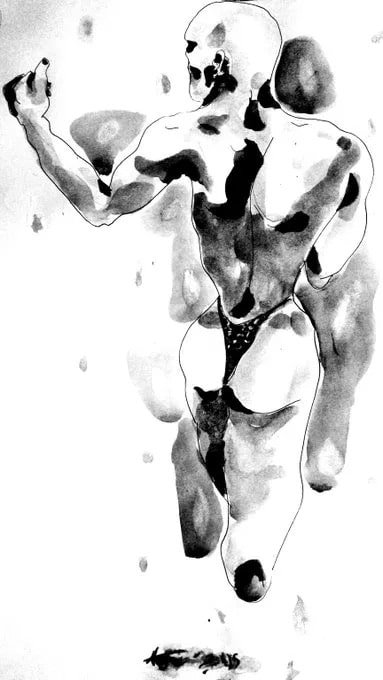
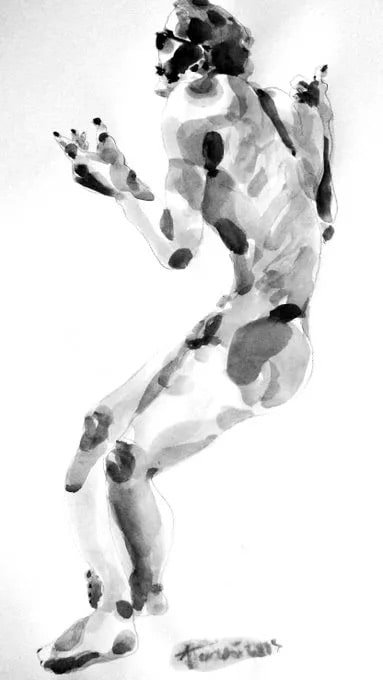
🟥 Imagine you could create a piece of art in collaboration with someone from history. Who would you choose and why?
To be honest, it is somewhat difficult for me to choose one among the artists I previously mentioned as my favorites. However, I might say Egon Schiele, as his works profoundly influence me. I feel that, stylistically, there is a greater alignment and harmony between his art and mine. Collaborating with him on an artistic creation would undoubtedly yield fascinating results.
🟥 What’s your superpower?
The ability to express my inner thoughts and emotions through the creation of artworks, profoundly impacting the emotions and psyche of my audience, immersing and transforming them completely.
🟥 What does success as an artist mean to you — recognition, impact, or something else entirely?
For me, having a global impact and recognition in the world of art is of utmost importance. This goal not only motivates my efforts but also serves as a benchmark for measuring my artistic achievements. I firmly believe that art has the power to transcend boundaries and convey profound, universal messages to audiences worldwide.
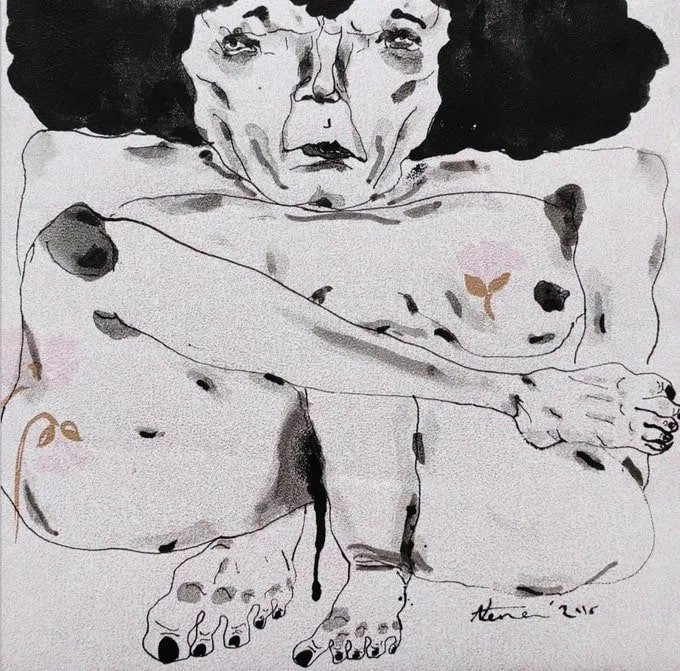
🟥 Can you tell us about a piece of your art that holds a special place in your heart and why it’s so meaningful to you?
I cannot choose a specific piece, but the ‘Swelling’ collection holds a special place for me. This collection is particularly significant because it was the focus of my first solo exhibition. Through this collection, I experienced a unique feeling and gained recognition exactly as I had envisioned. This success opened many doors for me in the art world.
🟥 What are your dreams or goals for the future?
My ultimate goal in the field of art is to achieve recognition and prestige at the highest global level. This positive reputation will not only pave the way for me to fulfill my aspirations but will also serve as a foundation for accomplishing my other objectives, all of which are integral parts of this primary goal.
🟥 How would you define a “creative person”?
A creative individual possesses unique characteristics and cannot easily be categorized into any specific group. They see the world with a different perspective and show this distinct view to others. Through their abilities and talents, they influence those around them. Creative individuals are the intellectual leaders of society and have the power to impact people with their innate skills.
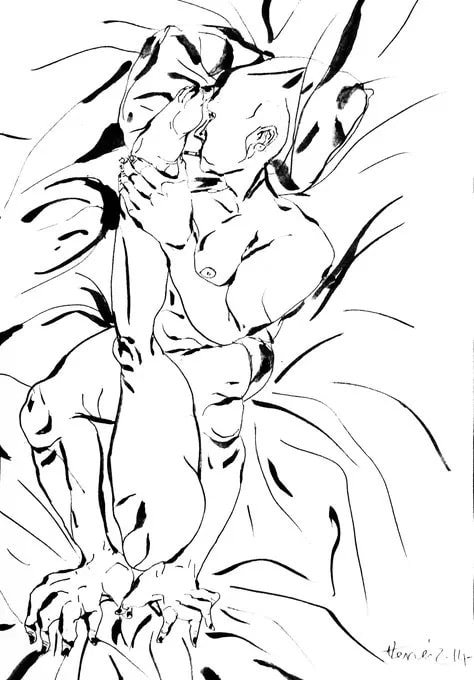
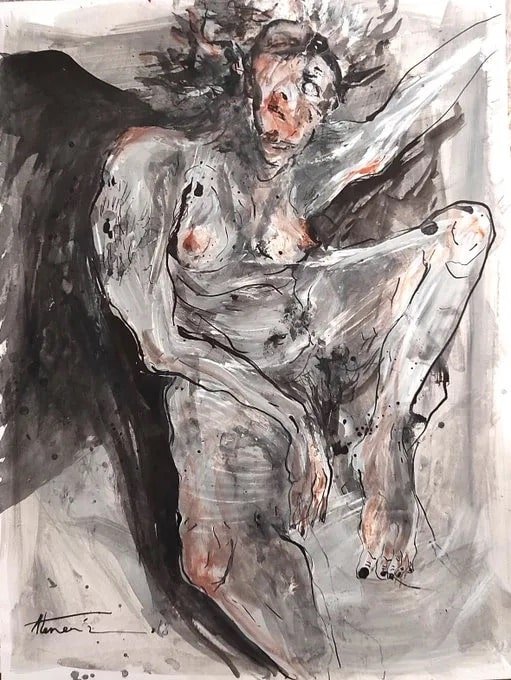
🟥 In your opinion, what are the positive and negative differences between being an artist today and being an artist a century ago?
In my opinion, the greatest positive feature of contemporary artists compared to artists from a century ago is that modern artists strive to shift traditional boundaries in artistic expression by presenting diverse artistic approaches. What is provocative in contemporary art is the challenge it poses to traditional concepts of aesthetics and the term “beauty.” Another important aspect of today’s artist is the interdisciplinarity of art. Artists often intertwine the boundaries between art and other disciplines by utilizing elements of technology and political or sociological concepts, thereby adding complexity to this phenomenon.
In fact, the absence of this feature in artists from the past century could be considered their most significant negative trait, resulting in art being categorized in a one-dimensional manner under specific categories such as painting, photography, sculpture, and so on, which could only be examined and perceived from those limited perspectives. In contrast, today’s artists easily break these boundaries and showcase new dimensions of art by integrating and blending all branches of art, which sometimes cannot even be classified within any particular category or discipline.
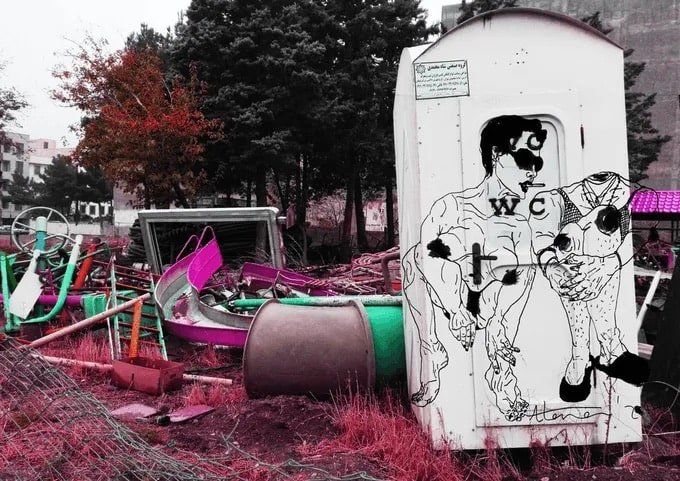
Another distinguishing feature of contemporary artists compared to those from a century ago is the existence of the internet and social media on a vast and extensive level. This has enabled a direct and instantaneous path for artists and their work to gain recognition and interact with artistic communities and audiences, in the quickest possible time.
In contrast, artists from a century ago had to physically send their artworks even just to participate in an exhibition in another city, in order to present themselves to a limited number of art enthusiasts and get acquainted with a few other artists closely. In my view, the freedom to create and the absence of any restrictions on expressing oneself and introducing one’s artworks to the world today cannot be compared at all to that of artists from a century ago!
🟥 In your opinion, what are the best and most challenging aspects of being an artist?
In my opinion, there are three aspects that I can identify as the most remarkable and challenging elements of art:
- The first aspect is that the creation of art occurs in the moment, without being able to prevent it or set a specific timeframe for it.
- The second aspect is that even the creator is unaware of the outcome of their work, and is surprised each time.
- The third aspect is when you observe the feedback and interpretations of your audience.
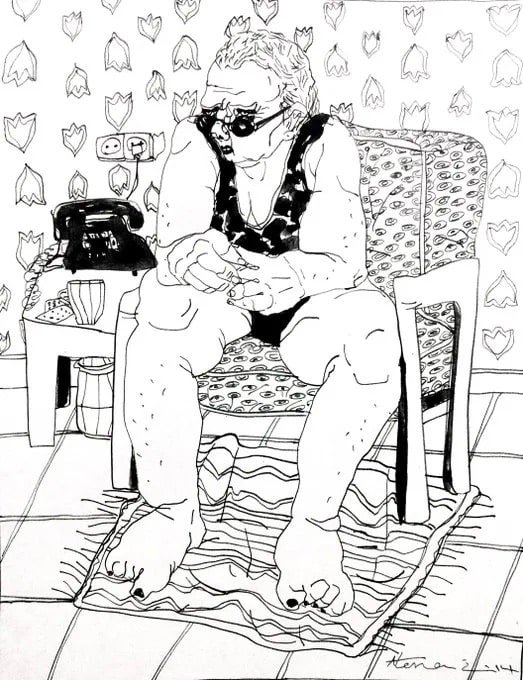
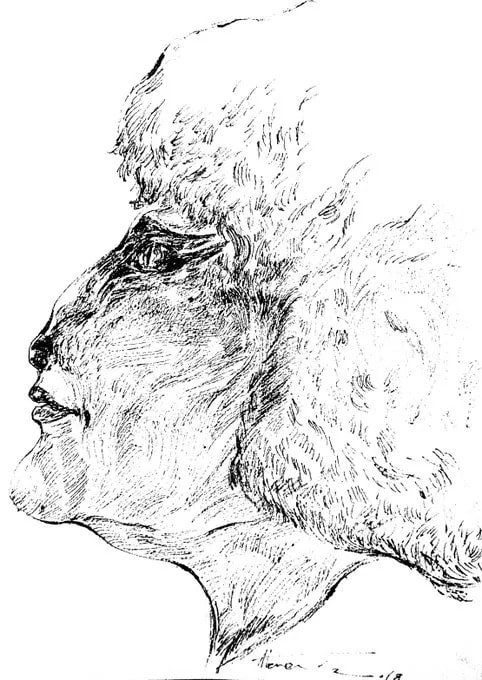
🟥 What advice would you give to aspiring artists who want to build a meaningful career?
First and foremost, consider what draws you to art. Identify and understand the various artistic styles, themes, or movements that resonate with you. Recognizing your preferences will aid in the formation of your artistic identity. Keep a notebook to record your artistic ideas, inspirations, and dreams. This will serve as a source of motivation throughout your artistic journey.
Passion is the driving force behind any significant piece of art. It is what fuels your creative fire and encourages you to explore new artistic techniques, experiment with different styles, and spend countless hours honing your craft. In essence, your passion is your artistic compass.
Lastly, draw inspiration from various art forms, including literature, music, dance, and cinema. Exploring interdisciplinary connections can enhance your creativity. Foster a habit of mindfulness and self-reflection. Regularly engage with your artistic interests and inspirations, and be aware of the purpose behind what you create.
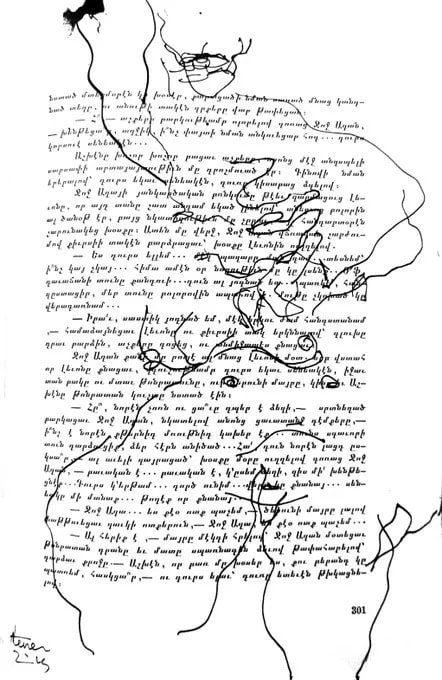
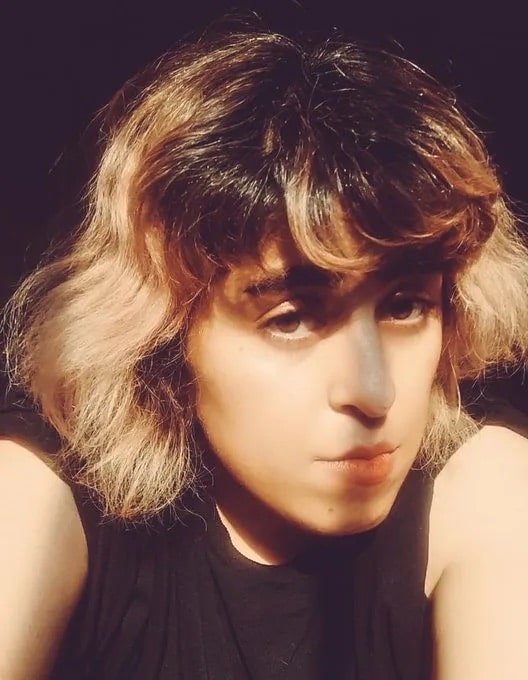
Relevant Links:
https://linktr.ee/athenamotamedi
Note: The answers given by the artist have been quoted verbatim without any editing to preserve the artist’s authentic voice for our readers.


